Why Swimming Class is Beneficial
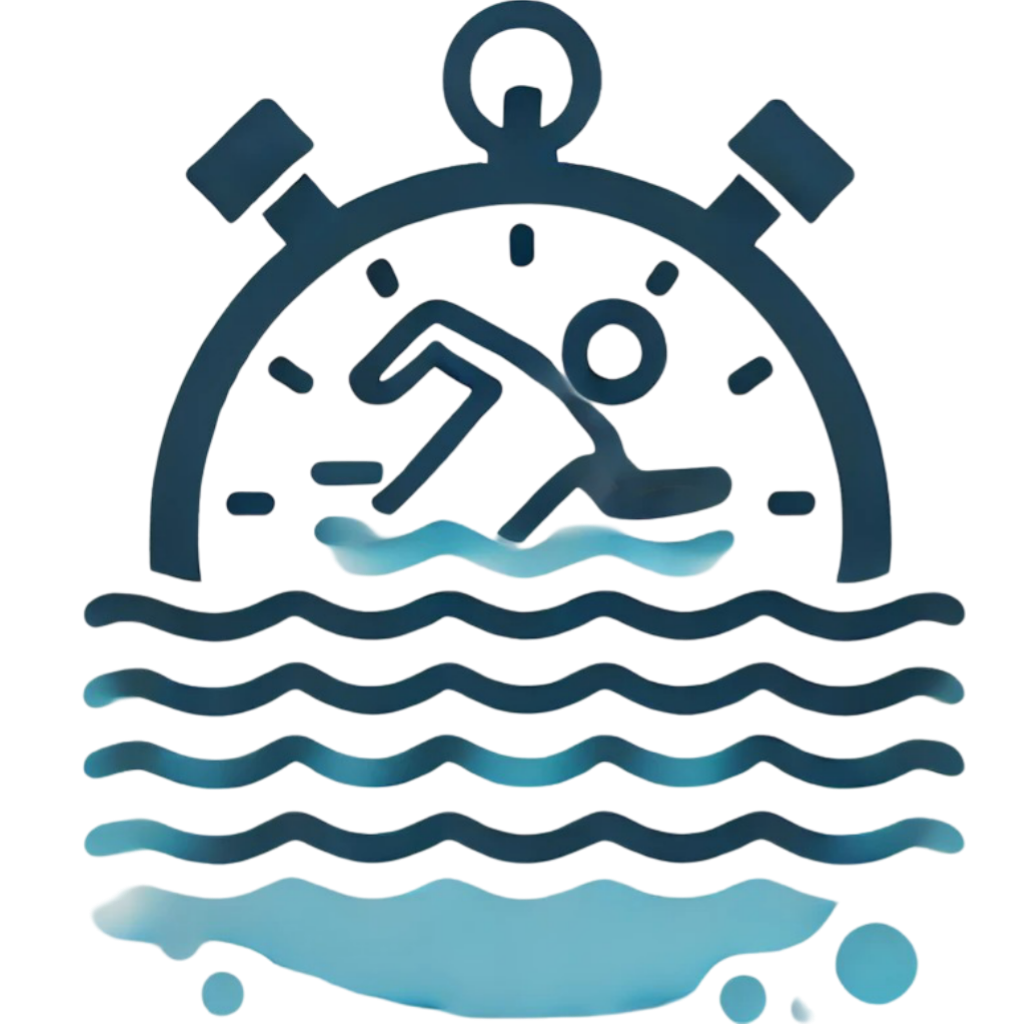
Discipline
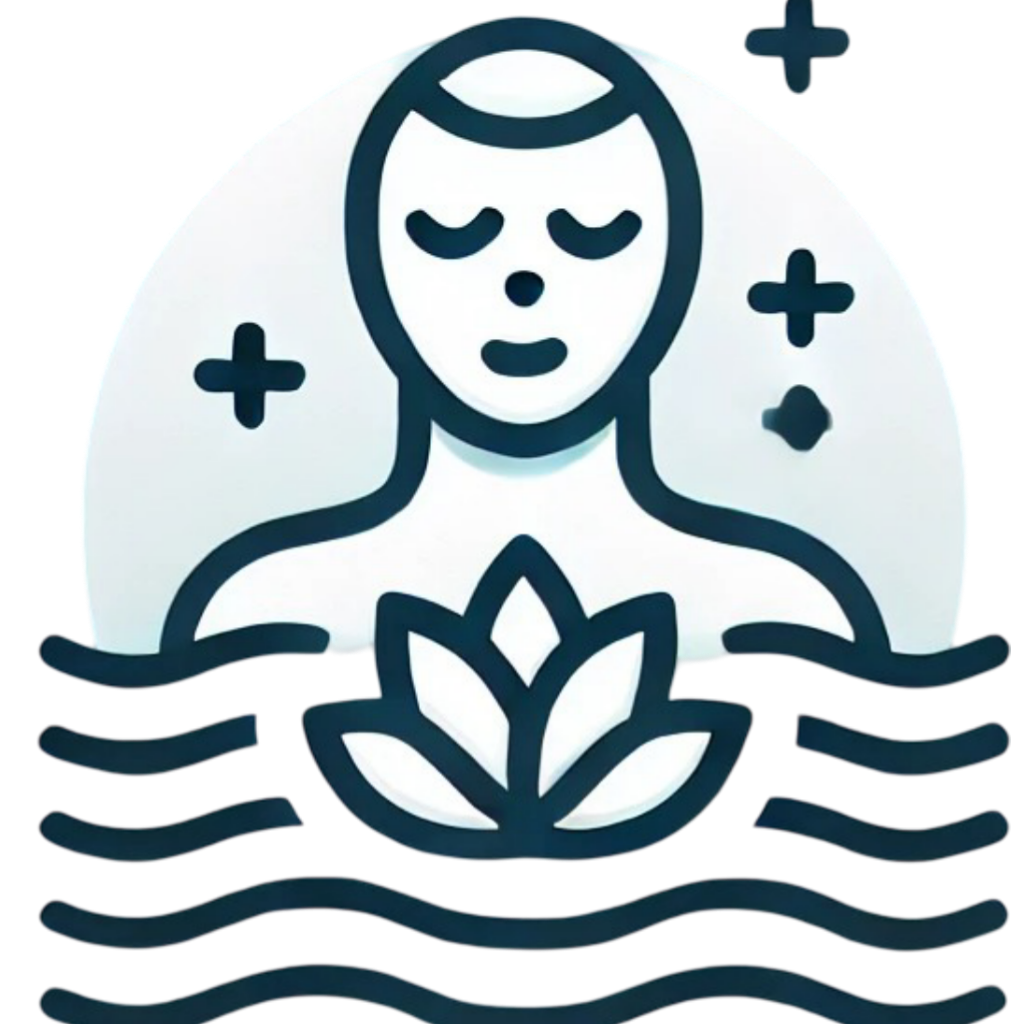
Mental Wellness
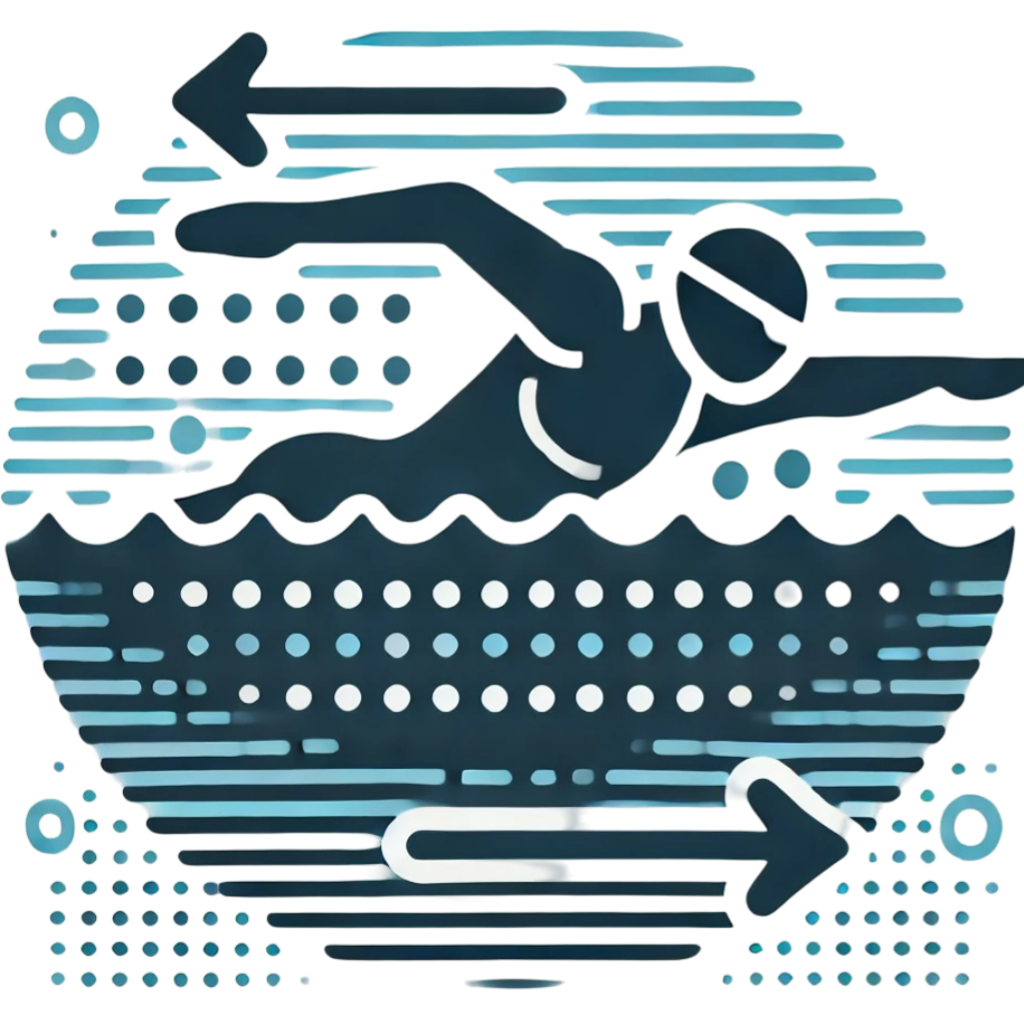
Mental Wellness

Fitness
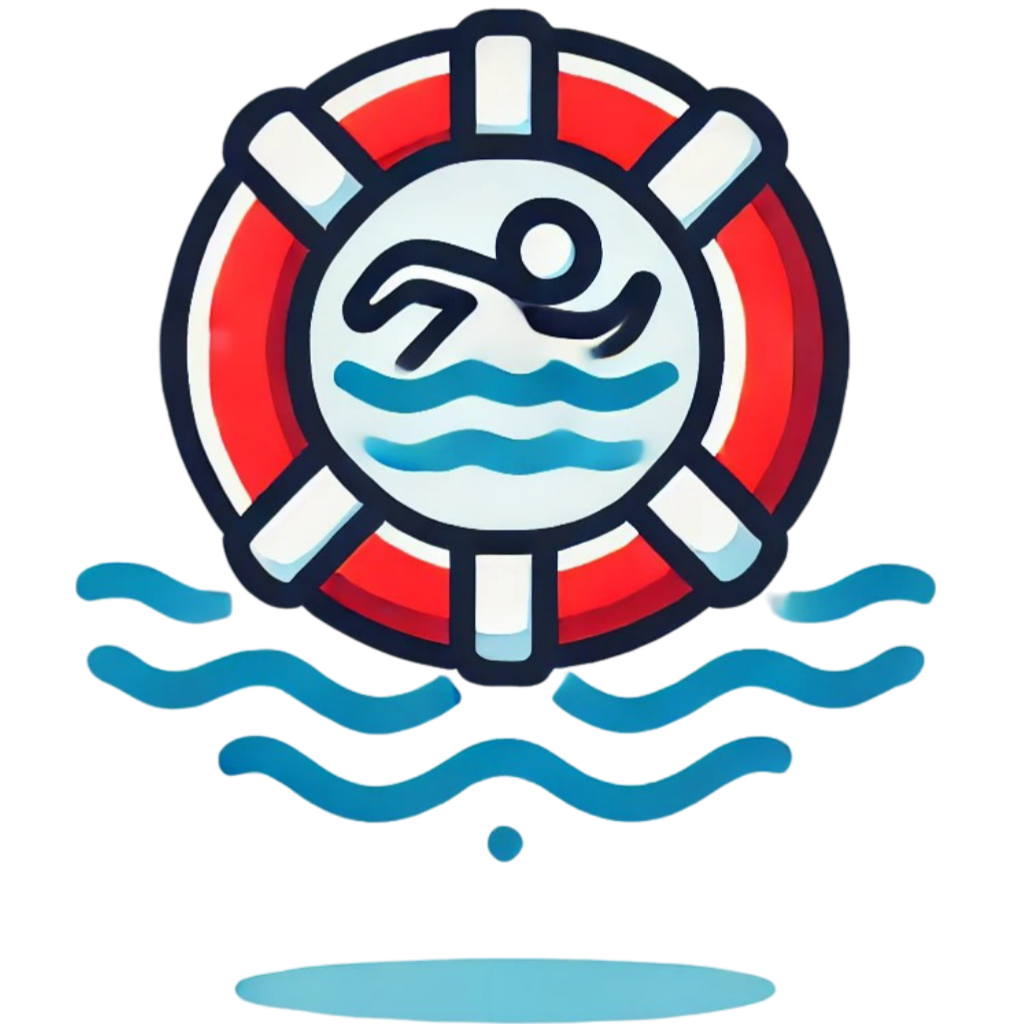
Fitness
Swimming Fundamentals

- Get Comfortable in the Water: First, get used to being in the water. Practice floating on your back and stomach in shallow water. This helps build confidence and reduces fear.
- Learn Proper Breathing: Breathing is important in swimming. Practice exhaling underwater through your nose or mouth and inhaling above water. Try rhythmic breathing by turning your head to the side while swimming.
- Masters of Basic Strokes: First, master basic strokes. Develop coordination by proper arm movements and kicks of the legs. Swim slowly and gradually increase your speed.
- Practice Kicking: Kicking will help you swim through the water. Use a kickboard for practicing flutter kicks for freestyle or frog kicks for breaststroke. Your legs should be straight but not stiff.
- Relax and consistent: Tension makes swimming a bit tough. Relax, maintain a constant pace, and practice to gain endurance and master the techniques.

Fundamentals of Swimming
- Get Comfortable in the Water: First, get used to being in the water. Practice floating on your back and stomach in shallow water. This helps build confidence and reduces fear.
- Learn Proper Breathing: Breathing is important in swimming. Practice exhaling underwater through your nose or mouth and inhaling above water. Try rhythmic breathing by turning your head to the side while swimming.
- Masters of Basic Strokes: First, master basic strokes. Develop coordination by proper arm movements and kicks of the legs. Swim slowly and gradually increase your speed.
- Practice Kicking: Kicking will help you swim through the water. Use a kickboard for practicing flutter kicks for freestyle or frog kicks for breaststroke. Your legs should be straight but not stiff.
- Relax and consistent: Tension makes swimming a bit tough. Relax, maintain a constant pace, and practice to gain endurance and master the techniques.
Highlights of our Swimming
Nursery, K1, K2
- Water Acclimation – Helps children get used to water through safe play in private schools with swimming pools.
- Basic Floating Skills – Floatation techniques help build body balance during swimming coaching in our private school.
- Breath Control – Introduced for safe habits in learn to swim sessions tailored for young swimmers.
- Splash & Play – Encourages movement in water for coordination and comfort in swimming pools.

Grade 1-2
- Basic Stroke Techniques – Develops elementary arm and leg action for freestyle and backstroke in swimming lessons for primary school students.
- Water Safety Skills – Teach pool-safe habits and personal rescues as part of our swimming class for students.
- Kick & Glide Drills – Explores and builds leg power for a streamlined stroke in our swimming programs.
- Underwater Exploration – Refines breath-holding and builds confidence underwater in our swimming classes for kids.
Grade 3-5
- Advanced Stroke Development – Reinforces freestyle and backstroke, introduces breaststroke as part of Orchids International School swimming class.
- Endurance Training – Builds stamina and strength, supporting physical fitness through structured exercises.
- Diving & Turns – Teaches proper diving entry and flip turns for advanced skills and diving safety.
- Competition Readiness – Speed drills and techniques prepare students for swimming competitions and team events.
Nursery, K1, K2
- Water Acclimation – Helps children get used to water through safe play in private schools with swimming pools.
- Basic Floating Skills – Floatation techniques help build body balance during swimming coaching in our private school.
- Breath Control – Introduced for safe habits in learn to swim sessions tailored for young swimmers.
- Splash & Play – Encourages movement in water for coordination and comfort in swimming pools.

Grade 1-2
- Basic Stroke Techniques – Develops elementary arm and leg action for freestyle and backstroke in swimming lessons for primary school students.
- Water Safety Skills – Teach pool-safe habits and personal rescues as part of our swimming class for students.
- Kick & Glide Drills – Explores and builds leg power for a streamlined stroke in our swimming programs.
- Underwater Exploration – Refines breath-holding and builds confidence underwater in our swimming classes for kids.
Grade 3-5
- Advanced Stroke Development – Reinforces freestyle and backstroke, introduces breaststroke as part of Orchids International School swimming class.
- Endurance Training – Builds stamina and strength, supporting physical fitness through structured exercises.
- Diving & Turns – Teaches proper diving entry and flip turns for advanced skills and diving safety.
- Competition Readiness – Speed drills and techniques prepare students for swimming competitions and team events.
Our Swimming Lab Setup
Our elite setup provides the perfect environment for swimming in high school, skill development, and building water confidence.
- •Expert-Led Swimming Classes for Students at all levels
- • One of the top school swimming programs in India among schools with swimming pools
- • Advanced filtration ensures clean swimming pools in our private school setup
- • Improves physical fitness, stamina, and water comfort through regular practice
Explore the Swimming Activity


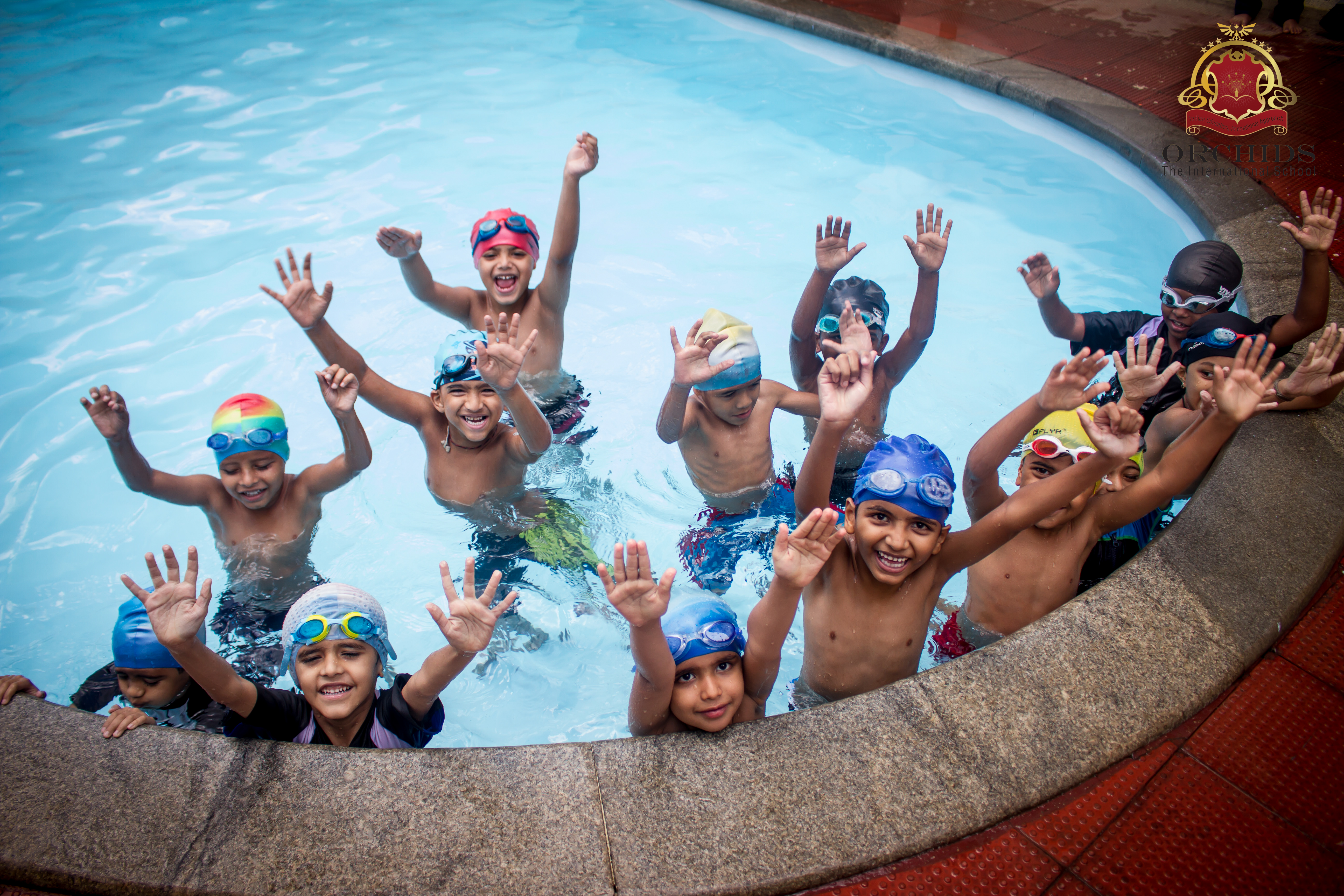
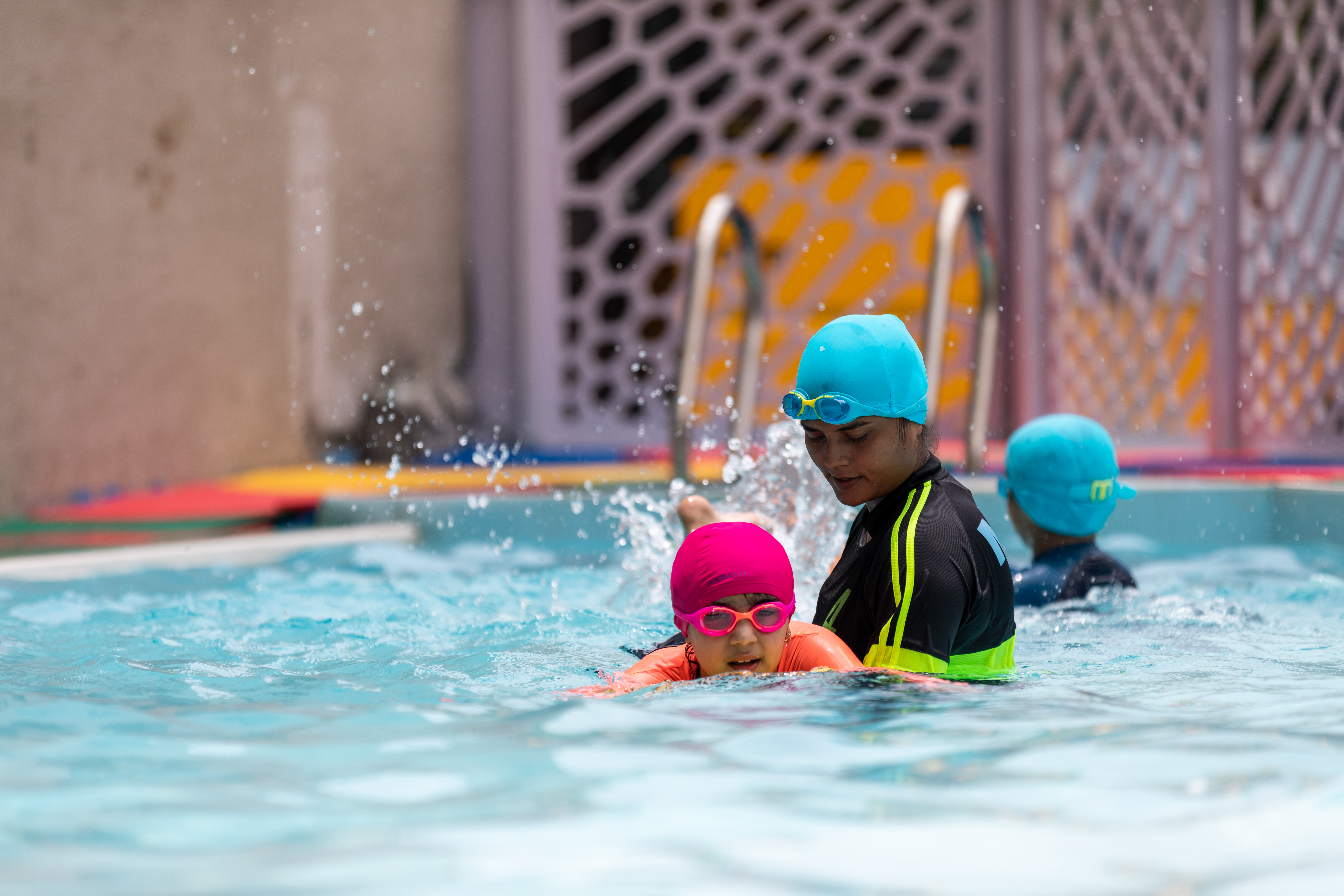
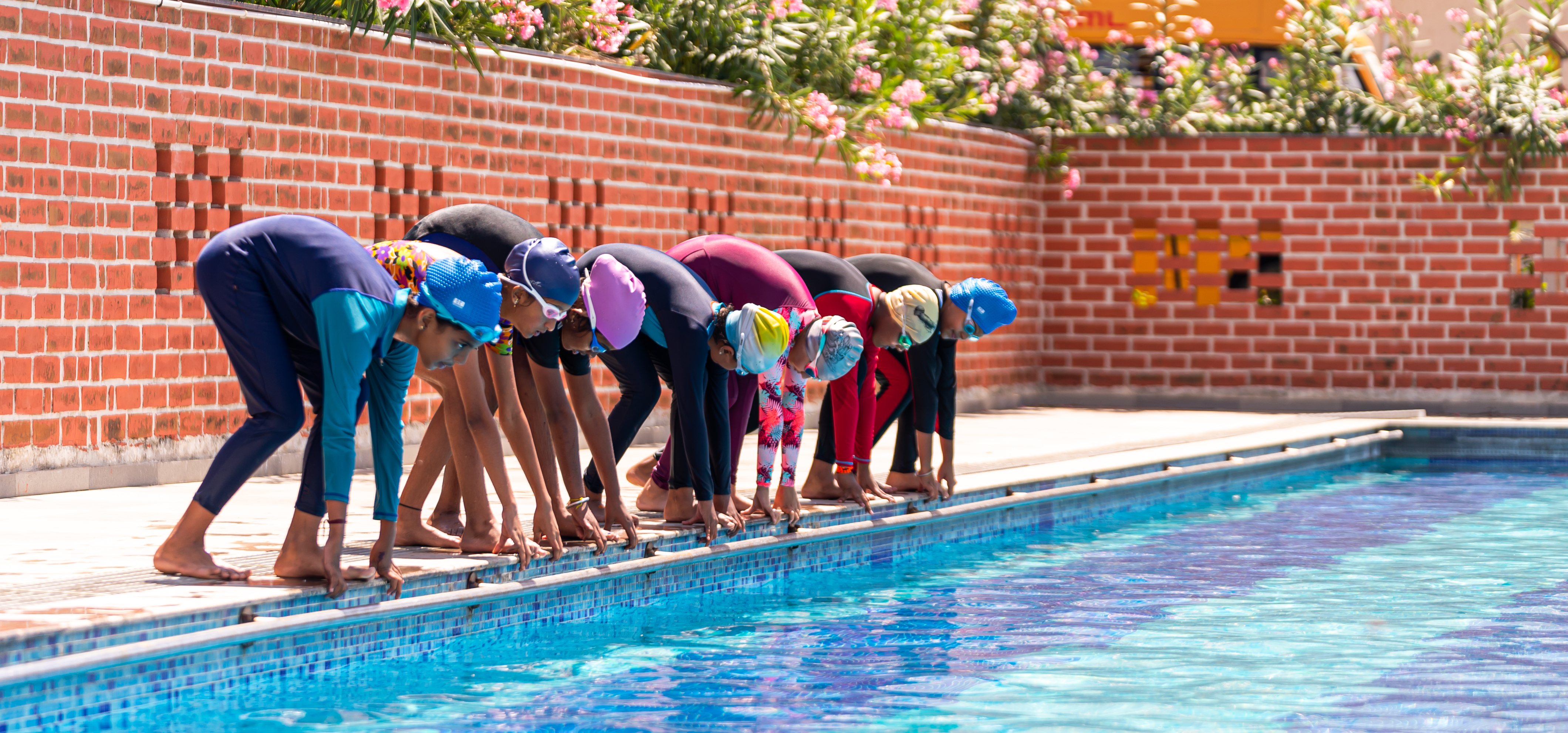
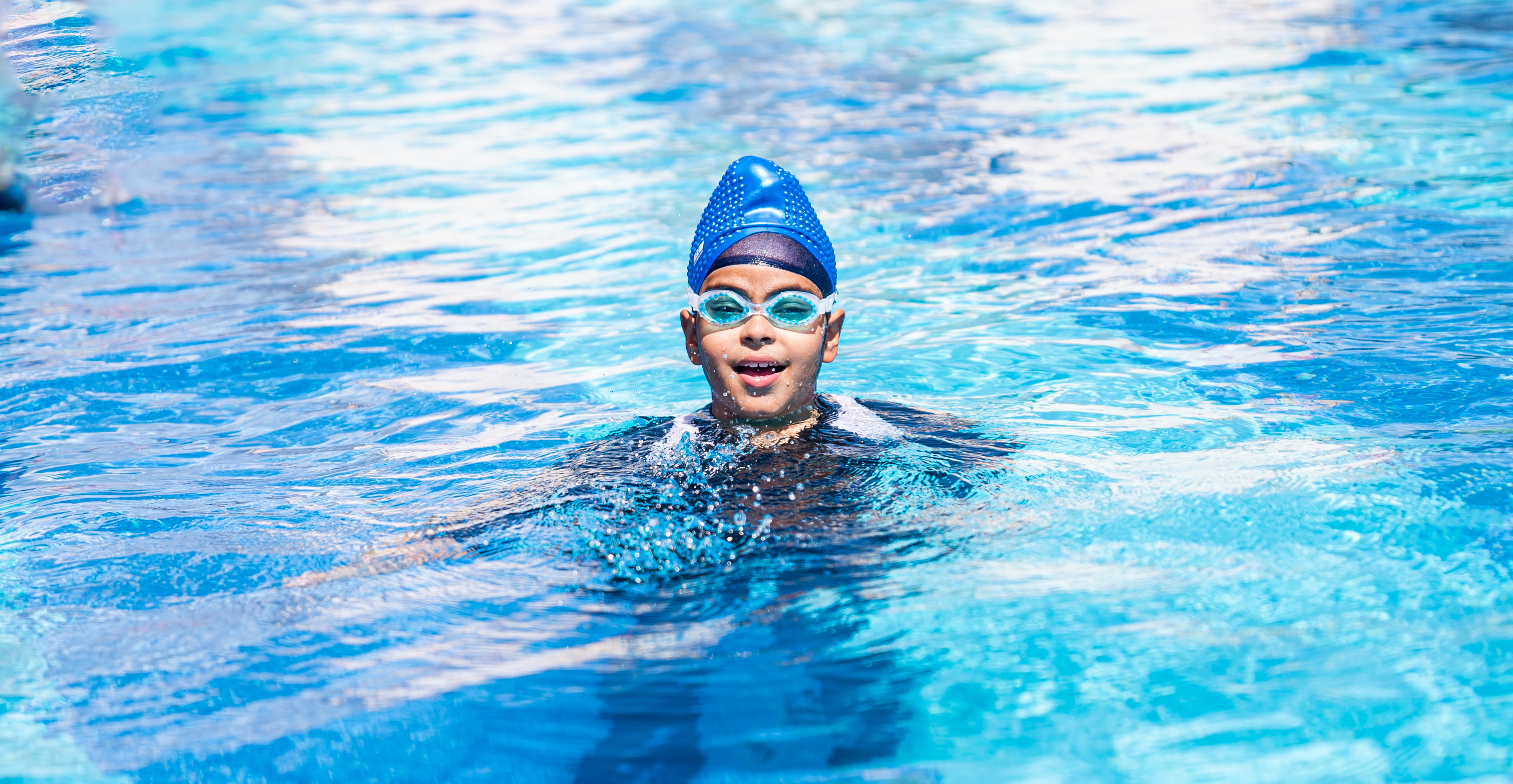
Frequently Asked Questions
There is no fixed age to learn how to swim, as it depends on individual comfort and physical ability. Babies as young as six months can start water familiarization with parental supervision, while formal swimming lessons often begin around 3 to 5 years old. However, people of any age can learn to swim with proper guidance and practice. Adults who haven't learned earlier can take beginner lessons tailored to their needs. The key is consistency, patience, and overcoming any fear of water. Swimming is a life skill that enhances safety, fitness, and confidence. It's never too late or too early to start learning!
The time it takes to learn swimming varies based on age, fitness level, and confidence in water. On average, beginners take 20 to 25 hours of practice, spread over a few weeks or months, to swim comfortably. Children often learn faster due to early exposure, while adults may take longer if they fear water. Regular practice, at least 2-3 times a week, helps improve progress. Learning basic floating and kicking can take a few sessions, while mastering strokes may take longer. Private lessons or professional coaching can speed up learning. Consistency and patience are key to becoming a confident swimmer.
When taking swimming classes, safety should be a top priority. Here are some essential precautions to follow:
-
Always listen to the instructor and follow their guidance carefully.
-
Warm up and stretch before entering the water to prevent muscle cramps.
-
Use appropriate swimming gear like goggles, swim caps, and flotation devices if needed.
-
Never swim alone—always stay within a supervised area.
-
Be aware of water depth and avoid diving into shallow pools.
-
Practice controlled breathing to prevent panic or choking.
-
Stay hydrated and avoid swimming when feeling dizzy or unwell.
-
Know basic water rescue techniques and be familiar with pool safety rules.
Students typically bring the following items to swimming class:
-
Swimsuit – A comfortable, well-fitting swimsuit for easy movement in the water.
-
Towel – To dry off after swimming.
-
Swim Cap – Keeps hair out of the face and protects it from chlorine.
-
Goggles – Helps protect the eyes and improves underwater vision.
-
Flip-flops or Water Shoes – Prevents slipping on wet surfaces.
-
Water Bottle – To stay hydrated before and after swimming.
-
Change of Clothes – Dry clothes to wear after class.
-
Swim Bag – To carry all essentials conveniently.
Yes, swimming is highly useful for both general fitness and as a supplement to sports performance. It provides a full-body workout, improving cardiovascular endurance, muscle strength, and flexibility with minimal impact on joints. Athletes in various sports, such as running, cycling, and football, use swimming for cross-training to enhance stamina and recovery. The resistance of water helps build muscle endurance, while controlled breathing improves lung capacity. Additionally, swimming aids in injury rehabilitation by reducing strain on muscles and joints. Its low-impact nature makes it ideal for people of all fitness levels. Overall, it’s an excellent way to enhance overall athletic performance and maintain fitness.
Learning to swim offers numerous benefits for kids. It enhances water safety, reducing the risk of drowning. Swimming improves physical fitness, building strength, endurance, and coordination. It boosts confidence and helps children overcome fear of water. The activity supports mental well-being, reducing stress and promoting relaxation. Swimming fosters social skills, as kids interact with peers in lessons or teams. It enhances lung capacity and cardiovascular health. Additionally, it teaches discipline and perseverance, valuable life skills for the future.


Comments (0)
Save my name, email and website in this browser for next time I comment